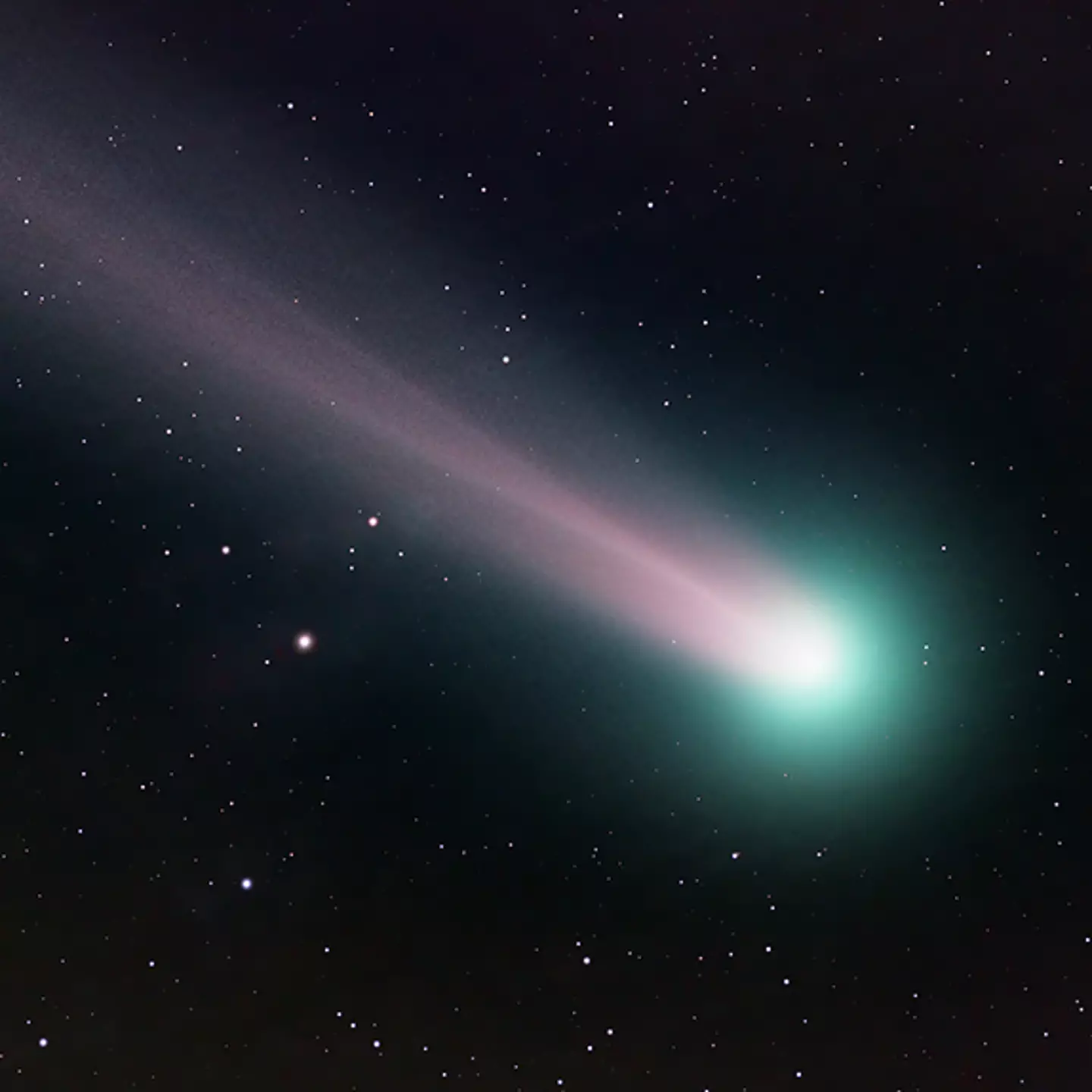
The ‘devil comet’ that flies by Earth roughly every 70 years is back - and you’ll be able to see it with your own eyes later this month.
The rare opportunity will happen on the evenings of March 30 and 31, and if you’re lucky with clear skies, you’ll be able to take a peek at the comet – its official name being 12P/Pons-Brooks.
Giving off a green sheen, it will likely be visible as it moves from the constellation of Andromeda and into Pisces.

Advert
The comet will reach its closest point to the Sun on April 21, before taking off back out into the solar system, where it’ll start its orbit again.
It's known as a 'cryovolcanic comet', which means it consists of an icy shell filled with gas. As it gets closer to the Sun, it heats up and pressure mounts, meaning that eruptions can occur - like an ice volcano.
These eruptions create a haze around the comet which reflects sunlight and makes the comet look like it has horns after each eruption.
Astrophysicist Dr Paul Strøm, from the University of Warwick, told Metro.co.uk: “Right now, one of the brightest known periodic comets is on its way towards the Sun. The comet is expected to reach a magnitude of 4.5 which means it ought to be visible from a dark location in the UK.
Advert
“The comet moves from the constellation of Andromeda to Pisces. As it does so it passes by bright stars, which will make it easier to spot on certain dates. In particular, on March 31, 12P/Pons–Brooks will be only 0.5 a degree from the bright star called Hamal.”

The devil comet was first recorded in 1812 by Jean-Louis Pons, but observations weren’t precise enough to predict when or where it would return until it was rediscovered in 1883 by William Brooks.
However, modern astronomers think the comet might have been recorded on previous trips around the solar system too – the earliest being 1385.
Advert
It's a whopping 10.5 miles wide - meaning it's bigger than Mount Everest - but don't worry, we're not in any danger of it actually hitting Earth.
While you might get lucky and be able to see the comet with the naked eye, Dr Robert Massey, the deputy executive director of the Royal Astronomical Society, told The Guardian: “If you have a half-decent pair of binoculars, certainly attempt to look for it with those," while also recommending sky-mapping apps for an extra hand.